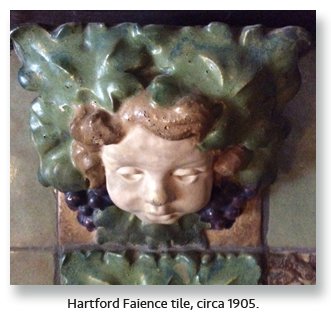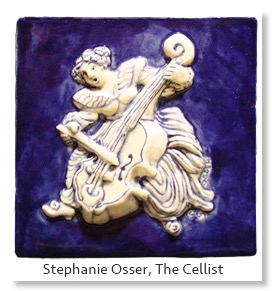E-News Summer 2014
20/08/14 16:31 Filed in: E-News
We're social … connect to Tile Heritage ……. share this site... Thank you!






Here’s What’s Below
(Our apologies for the quick links to each story being currently out of commission. Click on the image or ‘Read More’ link (below) to view all of the Summer E-News postings.)
Hartford Faience Revealed
Woolenius & Moravian Mantels
Jeremiah Black House
Crescent Tiles in St. Petersburg
Starchild’s Custom Ceramics
Deirdre Lee’s Urban Jungle
MUSIC to our ears!
Here’s What’s Below
(Our apologies for the quick links to each story being currently out of commission. Click on the image or ‘Read More’ link (below) to view all of the Summer E-News postings.)
Hartford Faience Revealed
Woolenius & Moravian Mantels
Jeremiah Black House
Crescent Tiles in St. Petersburg
Starchild’s Custom Ceramics
Deirdre Lee’s Urban Jungle
MUSIC to our ears!
E-News in Print
Link to past E-News prior to 2010
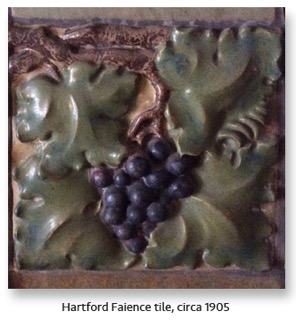 Hartford Faience Revealed
Hartford Faience Revealed
Atop Cedar Hill overlooking the Hudson River in an area where Dutch farmers had settled in the early 17th century, James B. Lyon, a printer in Albany, New York, purchased a 200 acre parcel in 1887, hoping to entice friends to join him in building their own summer homes on the property, known for its indigenous red cedars.
Dr. Willis Goss MacDonald, a close friend of Lyon in Albany and an internationally recognized physician, succumbed to the temptation and hired the prominent local architect Marcus Reynolds to design a summer house in the style of a Swiss chalet.
With approval from the doctor, Reynolds chose to feature Hartford Faience tile for the fireplace surround in the parlor, an aesthetic masterpiece for the three-story Arts & Crafts chalet. From the tax records the house is dated 1905. Sadly, MacDonald enjoyed his retreat for only a few years, dying of pneumonia in the winter of 1910 at the age of 47. The tiles lived on.
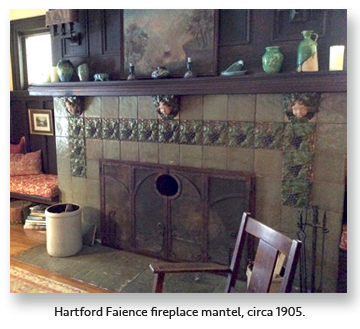
Recently Friends of Terra Cotta published “Hartford Faience Company” by noted Grueby scholar Susan Montgomery, which reveals a detailed history of the little known tile manufacturer in Hartford, Connecticut. The story begins many years earlier when two young men, Eugene Atwood and William Grueby, learned the art of tile making while working at the Low Art Tile Works in Chelsea, north of Boston.
There are reasons why even those with a keen eye for historic tiles can look at Hartford Faience and think “Grueby”: the bold high relief of some, the design simplicity of others and, importantly, the intensity of the glaze. When Atwood and Grueby left Low in 1890, they went into business together for a few years (Atwood & Grueby) producing architectural terra cotta in the style of della Robbias. They parted ways in ’94 with Atwood moving to Hartford where he established Atwood Faience Company, which was renamed Hartford Faience in 1900. Although Atwood had left the company by this time, his aesthetic and that of his former partner, William Grueby, continued to influence many of the company’s products until the company stopped making tiles in the mid-1910s.
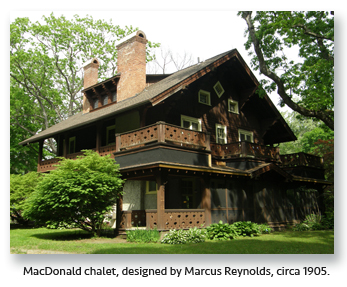
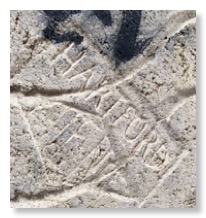
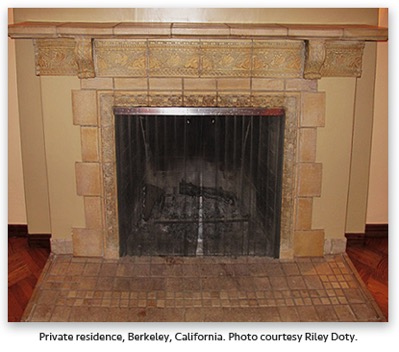
Woolenius Mantel in Berkeley
Woolenius Tile Co. was founded in 1927 as the Elsenius Tile and Mantel Co. by Charles Elsenius, a tile setter and native of Illinois, who set up shop in Berkeley making tiles. Familiar with the tiles of Batchelder, Claycraft, Muresque and California Art Tile, among others, Charles Elsenius reinterpreted their designs and created many of his own.
Moravian Tiles on the West Coast
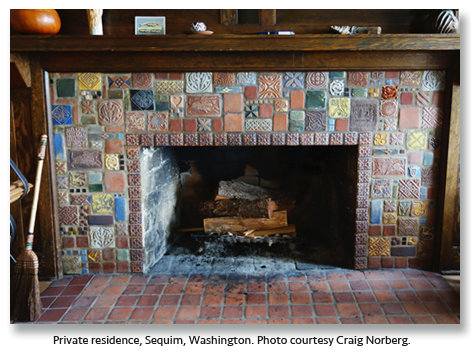
DONATIONS to the THF Archives Project are MUSIC to our ears!
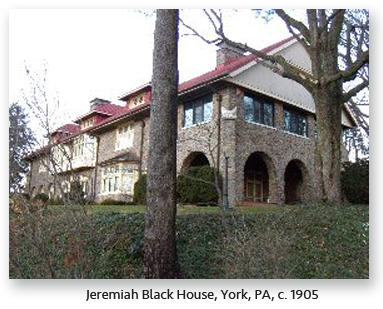
Jeremiah Black House
Paul Nevin, a restoration expert in central Pennsylvania, contacted Tile Heritage to verify the authenticity of the tiles in the master bathroom of the Jeremiah Black House in York, to find replacements for the broken ones, and to possibly identify the maker.

Jeremiah Black (1869-1916), having just graduated from Princeton, married Isabel Church, the daughter of the famous painter Frederick Church. Like his own renowned forbears, Jere studied law and was a practicing attorney throughout his professional career. The couple built their home in York in 1905, housing five servants to care for themselves and their family of four children. Black died unexpectedly at age 47 from surgical complications.
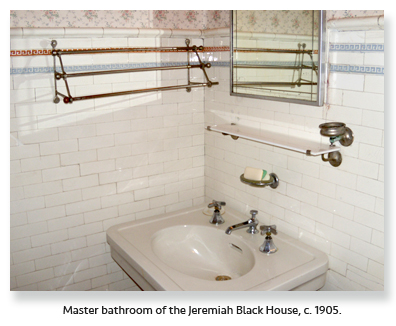
The bathroom tiles are definitely original to the house and were produced by the Robertson Art Tile Company of Morrisville, PA (1890-1930). We were able to identify the installation from an early product catalog illustrating a 1” x 6” liner that’s just below the top of the wainscot. The white wall tiles are 2” x 6”.
The company was founded by George W. Robertson, a 2nd generation member of the famed Robertson tile dynasty. He had left the Low Art Tile Works after 12 years there. Robertson served as superintendent until 1895, leaving Arthur Forst in charge.
 Crescent Tiles in St. Petersburg
Crescent Tiles in St. Petersburg
Having purchased a new (1926) home in St. Petersburg, Florida, Kim Cromwell wrote to Tile Heritage asking if we could identify the “Mayan” designs around the fireplace in her living room. Click HERE for close-ups!
As there were many tile companies in California producing such tiles during the 1920s, inspired by the well-publicized discoveries of Mayan and Aztec art in Mexico and Central America, we were certain that a match could be found among the tile catalogs in the Foundation’s archival collections.
A search of Batchelder, Claycraft, Calco, Malibu Potteries, Muresque and Woolenius materials turned up nothing! Here was a tile mystery that needed some fresh eyes and in depth investigation.
Appreciating the rarity of the installation, Kim opted to have the tiles carefully extracted; she donated them to a local museum where research got underway...

According to recent research by Robin Reed, Crescent Tile Company was founded by Frank Estes in 1910 to produce “Spanish Mosaic Tile,” which today is commonly referred to as “cement” tile. His “shed,” as the local paper called it, was located at the corner of Seventh Ave. and 2nd St. South in St. Petersburg, where the operation continued for many decades.

Unlike clay tiles that require firing in a kiln, Spanish Mosaic Tiles are composed of finely ground concrete, pigmented to achieve the desired color, and hydraulically pressed in molds to 30,000 pounds of pressure. Inexpensive to produce, the color and design possibilities are endless. Estes sold the business in 1922 to Walter Bickley, an entrepreneur from Chester, Pennsylvania who with the help of his two sons enlarged the facility, added a showroom for imported tiles from several countries in Europe and U.S. tiles as well, and began setting the tiles sold. By the mid-1920s the company had 40 employees and was doing well.
As noted in the local newspaper on June 19, 1927, E. L. Marshall, a ceramic engineer from Ohio State University, was producing “ornamental tiles in Mayan and Aztec patterns” at the same address as Crescent Tile Company. Named the “Crescent Clay Craft Tile Company” with its own showroom and production area, one can readily conclude judging from the exotic nature of his product line, that Marshall was in fact an employee of Crescent Tile hired because of his earlier experience working in California at Batchelder Tile and Claycraft Potteries, both of which offered decorative tiles featuring pre-Columbian designs. Interestingly, each of Mr. Marshall’s tiles removed from the Cromwell residence is over one inch thick and much heavier than a ceramic tile. From all indications it appears that the Crescent “Mayan” tiles are made of cement!
Special thanks to Robin Reed of the St. Petersburg Museum of History for her devotion to research, digging through the museum’s archives in search of Crescent tile. And to Bill Buyok, Avente Tile in Los Angeles, for his knowledge and helpful perspective on cement tiles.
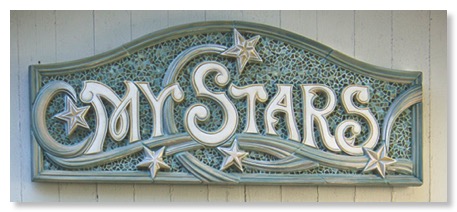
Starchild’s
Custom Ceramic Surfaces
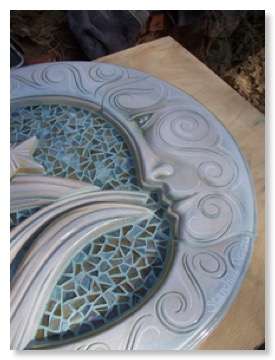
Ceramic artist Rosie Starchild with over 20 years experience working in tile potteries in the Greater Bay Area found herself challenged when commissioned by her friend, Sharon Matzinger, to create signage for the exterior of Sharon’s astrological practice in Calistoga.
For Rosie the scale of the project was daunting for her modest-sized studio in Cobb. Although she was an experienced carver, the techniques and equipment she was used to seemed inappropriate for this job. She opted to use styrofoam for modeling, cutting out shapes with a serrated knife and then “carving” with a piece of sandpaper wrapped around her finger. This process allowed her to prepare and finish all the pieces prior to production.
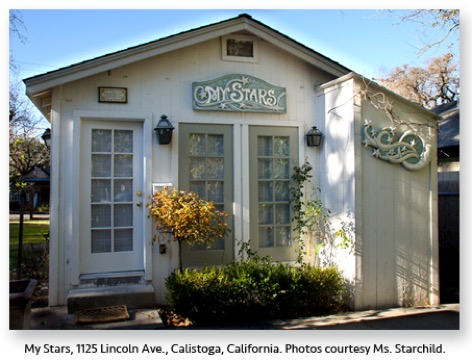
“I took many pictures during the whole process... to share, and so I could remember what I did!
“For now I'll share a picture of the installed signs.”
Rosie Starchild
See who Sponsors Tile Heritage Foundation!

Bold, vibrant color and strong graphic design . . .


Deirdre Lee’s colorful Urban Jungle Art & Design
Bold, vibrant color and strong graphic design combine in the distinctive style of this Southern California artist. Inspired by the Fauve artists and the Arts & Crafts era, with a palette of rich glazes and an illustrative technique, Deirdre Lee creates an amazing array of concepts from animal and nature motifs to fanciful, geometric and abstract works.
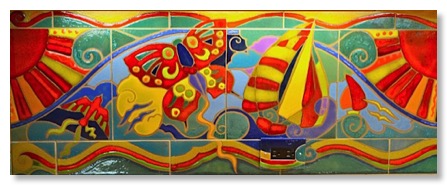
On thing is certain:
when you witness Deirdre’s
tiles firsthand, you know
you’re entrapped in
her Urban Jungle!
See www.urbanjungleart.com

DONATIONS to the THF Archives Project are MUSIC to our ears!
* Fund the Founders Legacy in 2014
* Capitalizing the Collections for Posterity
* Help continue to build the digital Finding-Aid Index providing online Public Access!
Link to past E-News prior to 2010

Atop Cedar Hill overlooking the Hudson River in an area where Dutch farmers had settled in the early 17th century, James B. Lyon, a printer in Albany, New York, purchased a 200 acre parcel in 1887, hoping to entice friends to join him in building their own summer homes on the property, known for its indigenous red cedars.
Dr. Willis Goss MacDonald, a close friend of Lyon in Albany and an internationally recognized physician, succumbed to the temptation and hired the prominent local architect Marcus Reynolds to design a summer house in the style of a Swiss chalet.
With approval from the doctor, Reynolds chose to feature Hartford Faience tile for the fireplace surround in the parlor, an aesthetic masterpiece for the three-story Arts & Crafts chalet. From the tax records the house is dated 1905. Sadly, MacDonald enjoyed his retreat for only a few years, dying of pneumonia in the winter of 1910 at the age of 47. The tiles lived on.

Recently Friends of Terra Cotta published “Hartford Faience Company” by noted Grueby scholar Susan Montgomery, which reveals a detailed history of the little known tile manufacturer in Hartford, Connecticut. The story begins many years earlier when two young men, Eugene Atwood and William Grueby, learned the art of tile making while working at the Low Art Tile Works in Chelsea, north of Boston.
There are reasons why even those with a keen eye for historic tiles can look at Hartford Faience and think “Grueby”: the bold high relief of some, the design simplicity of others and, importantly, the intensity of the glaze. When Atwood and Grueby left Low in 1890, they went into business together for a few years (Atwood & Grueby) producing architectural terra cotta in the style of della Robbias. They parted ways in ’94 with Atwood moving to Hartford where he established Atwood Faience Company, which was renamed Hartford Faience in 1900. Although Atwood had left the company by this time, his aesthetic and that of his former partner, William Grueby, continued to influence many of the company’s products until the company stopped making tiles in the mid-1910s.


___________________________________________________________________

Woolenius Mantel in Berkeley
Woolenius Tile Co. was founded in 1927 as the Elsenius Tile and Mantel Co. by Charles Elsenius, a tile setter and native of Illinois, who set up shop in Berkeley making tiles. Familiar with the tiles of Batchelder, Claycraft, Muresque and California Art Tile, among others, Charles Elsenius reinterpreted their designs and created many of his own.
Moravian Tiles on the West Coast

DONATIONS to the THF Archives Project are MUSIC to our ears!

Jeremiah Black House
Paul Nevin, a restoration expert in central Pennsylvania, contacted Tile Heritage to verify the authenticity of the tiles in the master bathroom of the Jeremiah Black House in York, to find replacements for the broken ones, and to possibly identify the maker.

Jeremiah Black (1869-1916), having just graduated from Princeton, married Isabel Church, the daughter of the famous painter Frederick Church. Like his own renowned forbears, Jere studied law and was a practicing attorney throughout his professional career. The couple built their home in York in 1905, housing five servants to care for themselves and their family of four children. Black died unexpectedly at age 47 from surgical complications.

The bathroom tiles are definitely original to the house and were produced by the Robertson Art Tile Company of Morrisville, PA (1890-1930). We were able to identify the installation from an early product catalog illustrating a 1” x 6” liner that’s just below the top of the wainscot. The white wall tiles are 2” x 6”.
The company was founded by George W. Robertson, a 2nd generation member of the famed Robertson tile dynasty. He had left the Low Art Tile Works after 12 years there. Robertson served as superintendent until 1895, leaving Arthur Forst in charge.

Having purchased a new (1926) home in St. Petersburg, Florida, Kim Cromwell wrote to Tile Heritage asking if we could identify the “Mayan” designs around the fireplace in her living room. Click HERE for close-ups!
As there were many tile companies in California producing such tiles during the 1920s, inspired by the well-publicized discoveries of Mayan and Aztec art in Mexico and Central America, we were certain that a match could be found among the tile catalogs in the Foundation’s archival collections.
A search of Batchelder, Claycraft, Calco, Malibu Potteries, Muresque and Woolenius materials turned up nothing! Here was a tile mystery that needed some fresh eyes and in depth investigation.
Appreciating the rarity of the installation, Kim opted to have the tiles carefully extracted; she donated them to a local museum where research got underway...


According to recent research by Robin Reed, Crescent Tile Company was founded by Frank Estes in 1910 to produce “Spanish Mosaic Tile,” which today is commonly referred to as “cement” tile. His “shed,” as the local paper called it, was located at the corner of Seventh Ave. and 2nd St. South in St. Petersburg, where the operation continued for many decades.

Unlike clay tiles that require firing in a kiln, Spanish Mosaic Tiles are composed of finely ground concrete, pigmented to achieve the desired color, and hydraulically pressed in molds to 30,000 pounds of pressure. Inexpensive to produce, the color and design possibilities are endless. Estes sold the business in 1922 to Walter Bickley, an entrepreneur from Chester, Pennsylvania who with the help of his two sons enlarged the facility, added a showroom for imported tiles from several countries in Europe and U.S. tiles as well, and began setting the tiles sold. By the mid-1920s the company had 40 employees and was doing well.
As noted in the local newspaper on June 19, 1927, E. L. Marshall, a ceramic engineer from Ohio State University, was producing “ornamental tiles in Mayan and Aztec patterns” at the same address as Crescent Tile Company. Named the “Crescent Clay Craft Tile Company” with its own showroom and production area, one can readily conclude judging from the exotic nature of his product line, that Marshall was in fact an employee of Crescent Tile hired because of his earlier experience working in California at Batchelder Tile and Claycraft Potteries, both of which offered decorative tiles featuring pre-Columbian designs. Interestingly, each of Mr. Marshall’s tiles removed from the Cromwell residence is over one inch thick and much heavier than a ceramic tile. From all indications it appears that the Crescent “Mayan” tiles are made of cement!
Special thanks to Robin Reed of the St. Petersburg Museum of History for her devotion to research, digging through the museum’s archives in search of Crescent tile. And to Bill Buyok, Avente Tile in Los Angeles, for his knowledge and helpful perspective on cement tiles.
___________________________________________________________________

Starchild’s
Custom Ceramic Surfaces

Ceramic artist Rosie Starchild with over 20 years experience working in tile potteries in the Greater Bay Area found herself challenged when commissioned by her friend, Sharon Matzinger, to create signage for the exterior of Sharon’s astrological practice in Calistoga.
For Rosie the scale of the project was daunting for her modest-sized studio in Cobb. Although she was an experienced carver, the techniques and equipment she was used to seemed inappropriate for this job. She opted to use styrofoam for modeling, cutting out shapes with a serrated knife and then “carving” with a piece of sandpaper wrapped around her finger. This process allowed her to prepare and finish all the pieces prior to production.

“I took many pictures during the whole process... to share, and so I could remember what I did!
“For now I'll share a picture of the installed signs.”
Rosie Starchild
See who Sponsors Tile Heritage Foundation!

Bold, vibrant color and strong graphic design . . .


Deirdre Lee’s colorful Urban Jungle Art & Design
Bold, vibrant color and strong graphic design combine in the distinctive style of this Southern California artist. Inspired by the Fauve artists and the Arts & Crafts era, with a palette of rich glazes and an illustrative technique, Deirdre Lee creates an amazing array of concepts from animal and nature motifs to fanciful, geometric and abstract works.

On thing is certain:
when you witness Deirdre’s
tiles firsthand, you know
you’re entrapped in
her Urban Jungle!
See www.urbanjungleart.com

DONATIONS to the THF Archives Project are MUSIC to our ears!
* Fund the Founders Legacy in 2014
* Capitalizing the Collections for Posterity
* Help continue to build the digital Finding-Aid Index providing online Public Access!
MAJOR DONOR INQUIRIES:We have an additional two year Archiving Fulfillment plan with budgets outlined for 2014 & 2015.(Details are available in a formal Strategic Plan document. Email: foundation@tileheritage.org)
MAKE A TAX DEDUCTIBLE DONATION . . . ![]()
(Contributions to Tile Heritage Foundation are fully tax-deductible as allowed by law.)
READ MORE DETAILS!
( Stephanie Osser, ceramic artist ( Illustrations in Clay Studio) producer of The Cellist tile is a THF member: http://www.stephanieosser.com/ )

